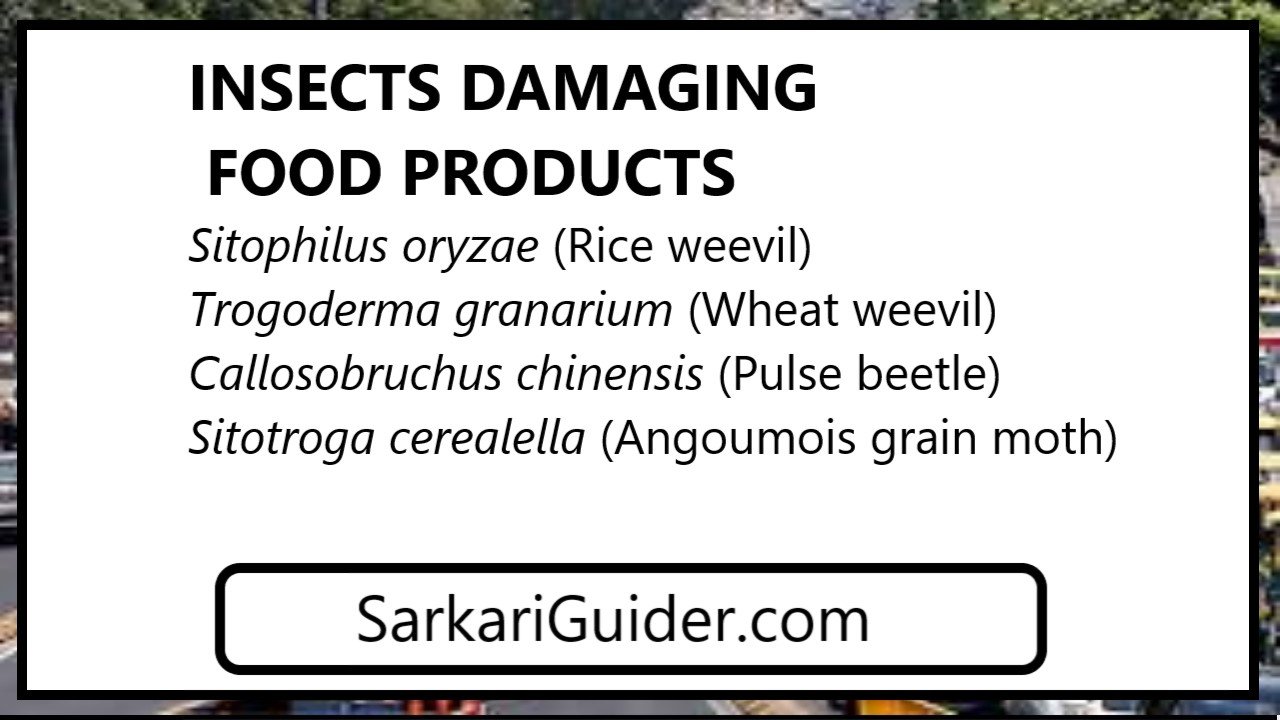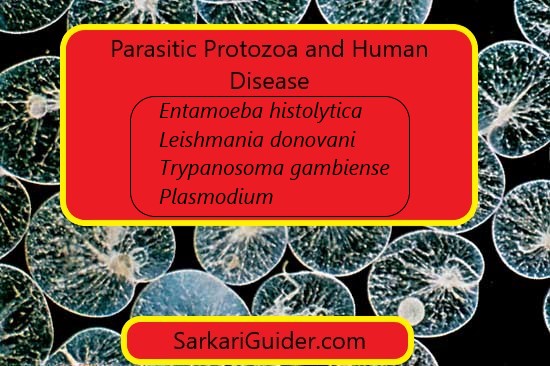INSECTS DAMAGING FOOD PRODUCTS
INSECTS DAMAGING FOOD PRODUCTS
- Sitophilus oryzae (Rice weevil)
Class- Insecta
Order- Coleoptera
Family- Curculionidae
Genus- Sitophilus
Specie- oryzae
The rice weevil are the most destructive insects of the grains which causes almost 50% damage to the stored grains throughout the world.
It is a serious pest of rice. They prefer humid condition and multiply rapidly in stores if left undisturbed. Adults feed upon whole seeds or flour but the larvae feeds only upon seeds or cereal products. The major damage to grains is done by larvae.
Damage- Rice weevil is a serious pest of rice but is also seen feeding upon maize, barley, Jowar and Sorghum in humid conditions. The larval stage is found to be more destructive than the adults but both adults and larvae damage the grain. Maximum damage occurs between the month of August to October and very less in summer.
Life Cycle- The female weevil between April to October, lays about 400 eggs in the holes of seed made by her mandibles. After 6 to 7 days of incubation eggs are hatched into larvae. The larvae feeds and convert into Pupa and after 6 to 14 it emerges into adult weevil. The lifespan of the adult weevil varies from 4 to 5 months.
Prevention and control
- The grains should be dried and stored in clean insect-proof and dry granaries and examined constantly.
- Godowns should be heated up to 15°F for 10 hours.
- Godowns should be sterilized why burning coke and spraying 2 gallons of 2.5% methoxychor per 1000 sq feet area.
- Surface infestation can be controlled by aerosols like pyrethrum aerosol and Dichlorodichloromethane.

- Trogoderma granarium (Wheat weevil)
Class- Insecta
Order- Coleoptera
Family- Dermestidae
Genus- Trogoderma
Species- granarium
It is the main pest of wheat but other than that it also feeds upon rice, maize, oat, jowar, barley, gram and pulses. Only larval stage is the infective stage.
Damage- Only larval stage causes damage to the grains. They attack the the superficial layer of the grains. The maximum attack is seen between July and October. The destruction of embryo is the major damage caused by this pest but on heavy infestation every part of the grain may be destroyed. They mostly attack the upper 50cm layer of the stored grains.
Life cycle- Adults after 2 to 3 days of emergence copulates and fertilized female Lays eggs at the rate of of 13 to 85 eggs in 1 to 7 days. After 325 days of incubation eggs hatch into larvae and male attains fullgrown stage in 20 to 30 days while female in 24 to 40 days after this they pupate. Adult weevils emerges after 4 to 6 days of pupation. The breeding period is from April to October.
Prevention and control
- Grains should be dried in sunlight and stored in clean insect proof and dry granaries.
- Attack is mostly superficial so the infested portion of grains should be removed completely.
- In severe infestation the adults and larvae can be trapped by spreading gunny bags over the grains which results into clinging of the adults and larvae to the bags from which weevils should be collected and destroyed.

- Callosobruchus chinensis (Pulse beetle)
Class– Insecta
Order- Coleoptera
Family- Bruchidae
Genus- Callosobruchus
Species- chinensis
It is a serious pest of stored gram and cowpea but also feeds on other pulses. Grubs are found to be the only infective stage for the stored grains. Maximum damage is reported from April to October. The first evidence of infestation is the holes on grains. Humidity and temperature are the factors on which intensity of infestation is dependent.
Damage- The major infestation is reported by the larvae in the month of April to October. All the grains of the infested Store are damaged buy this paste only and the infested grains becomes useless for human consumption.
Life cycle- Others populate just after the emergence and fertilized female lays oval scale like eggs at the rate of 1 to 37 per day which are attached with the grains. Eggs hatches into larvae after 7 to 14 days of incubation. Larvae bore the grains and complete their development inside the grains. After 10 to 12 days in the month of August and September the larvae converts into white coloured pupa. After 4 to 28 days, the pupa emerges by cutting a circular hole in the seed coat. The lifespan of the adult beetle varies from 5 to 20 days according to the climatic conditions.
Prevention and control
- Grains should be dried in sunlight and stored in clean and dry place.
- Sand layer of 2 inch thick should be spread over the grain surface to check the egg laying.
- In winters, grains should be mixed with hydrated lime, pyrethrum or derris powder which should be 4 times its weight and covered with 1 inch layer of fine dust of lime in the store cans or drums.

- Sitotroga cerealella (Angoumois grain moth)
Class- Insecta
Order- Lepidoptera
Family- Gelechiidae
Genus- Sitotroga
Species- cerealella
This moth causes damage to stored paddy and jowar but is also seen damaging wheat, barley and maize. They also attack wheat in the field.
Damage- Maximum damage has been observed in monsoon period. The larvae feeds on the grain and makes a hole. They have been observed to cause 30 % damage to the grains but sometimes they destroy the grain completely. It is also observed that mostly the upper layer of the grains in the store is severely attacked.
Life cycle- After 24 hours of emergence the moths starts mating and after fertilization the female moth lays approx 150 eggs within a week. It was found that at 20, 25, 30 and 35℃ eggs hatch in 8.5, 6.0, 4.1, 4.6 days respectively. The young larvae feeds on the seeds for about three weeks and gets converted into pupae which is reddish brown in colour which ultimately emerge into adults. The male has smaller lifespan than the female. The whole life cycle takes about 28 to 37 days.
Prevention and control
- The seeds and grains should be sterilized and dried well before storing.
- Infested, eggs, larvae and pupae should be removed from the granaries.
- Fumigation by carbon tetrachloride and carbon disulfide before and after the storage.
- Spraying chloropicrin on the closed containers of stored grains is also useful.

प्राचीन भारतीय राजनीति की प्रमुख विशेषताएँ
Disclaimer: sarkariguider.com केवल शिक्षा के उद्देश्य और शिक्षा क्षेत्र के लिए बनाई गयी है | हम सिर्फ Internet पर पहले से उपलब्ध Link और Material provide करते है| यदि किसी भी तरह यह कानून का उल्लंघन करता है या कोई समस्या है तो Please हमे Mail करे- sarkariguider@gmail.com




